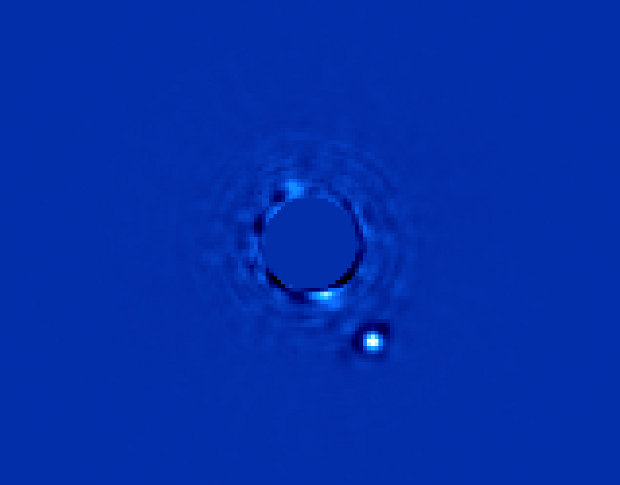
After nearly a decade needed for its development, construction and testing, in recent days the Gemini Planet Imager (GPI) officially came into operation. It’s a huge camera built to take pictures of exoplanets. It was deployed on the Gemini South telescope in Chile, one of the two large twin telescopes with a diameter of 8.1 m (26.9 ft) each that form the Gemini – which means twins – Observatory.
Those who follow the news in the field of astronomy are now used to reading news about the discovery of new exoplanets. However, in most cases the detection is carried out by indirect methods such as the gravitational effects that the planets have on their stars. The planets directly observed are fery few because it’s extremely difficult to capture their very faint light discerning it from that much brighter from their star.
The GPI is designed precisely to be able to distinguish a planet from its star even when its light is 10 million times fainter and is separated from it by 0.2 arcseconds. Calling this instrument a camera is simplistic because it’s as big as a car and extremely sophisticated. It can eliminate the blur caused by the atmosphere and using a coronagraph it can block the light of the stars and see their planets. It’s also equipped with an infrared sensor and a spectrograph.
The tests made in November 2013 gave terrific results. For example, the GPI showed the planet Beta Pictoris b, a gas giant several times bigger than Jupiter whose estimated age is about 10 million years. Its heat makes it shine at the infrared while the star Beta Pictoris, which is about 63 light years from Earth, is hidden in the center of the image.
An instrument such as the GPI will allow astronomers to obtain much more information about exoplanets, as they’ll be able to get an idea of their composition and their atmosphere. It was designed to observe exoplanets but it can also be used for objects within our solar system. During the tests, it was used to observe Europa, one of Jupiter’s moons. This is useful to keep track of the changes that occur on the surface of an active satellite such as Europa.
Astronomers know where to find exoplanets so in the coming years they’ll try to directly observe those identified in an indirect manner. The GPI is a really extraordinary instrument that brings to the study of exoplanets to a higher level.
[ad name=”eBayUSUKAstronomy”]


Permalink